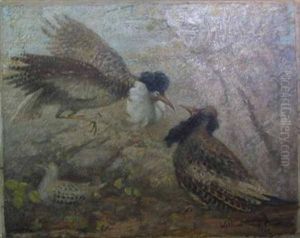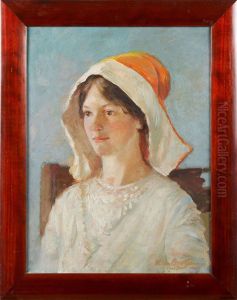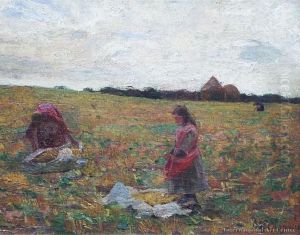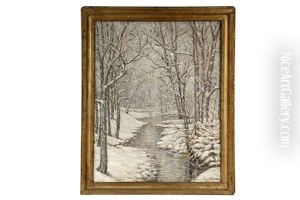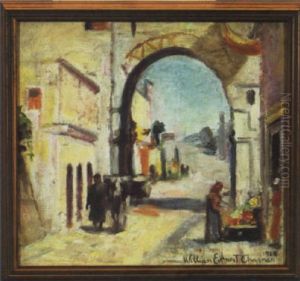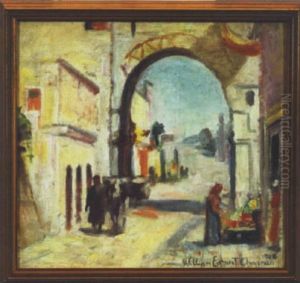William Ernest Chapman Paintings
William Ernest Chapman was an American artist born in 1858, known for his landscapes, marine paintings, and portraits. His artistic journey began in Brooklyn, New York, where he was born and raised. Chapman developed a deep appreciation for the natural world early on, an influence that would prominently feature throughout his career. He pursued formal art education in the United States and Europe, which was a common practice among aspiring artists of his time seeking to refine their skills and gain exposure to different artistic styles and techniques.
In the late 19th and early 20th centuries, Chapman emerged as a significant figure in the American art scene. He was particularly admired for his ability to capture the subtle nuances of light and atmosphere, characteristics that became hallmarks of his work. Chapman's landscapes often depicted serene and idyllic settings, reflecting his fascination with nature's beauty and tranquility. His marine paintings, on the other hand, showcased his skill in rendering the dynamic and sometimes tumultuous relationship between the sea and the sky.
Throughout his career, Chapman exhibited his works in various prestigious venues, including the National Academy of Design and the Pennsylvania Academy of the Fine Arts. His contributions to the art world were recognized by his peers and art critics alike, earning him a respectable place among American artists of his era. Despite the changing trends in art during his lifetime, Chapman remained true to his artistic vision, focusing on the themes and subjects that resonated most with him.
William Ernest Chapman's legacy as an artist is preserved through his paintings, which continue to be appreciated by art enthusiasts and collectors. His dedication to capturing the essence of the American landscape and his masterful use of light and color have ensured his place in the history of American art. Chapman passed away in 1947, leaving behind a body of work that continues to inspire and captivate audiences with its timeless beauty and emotional depth.
